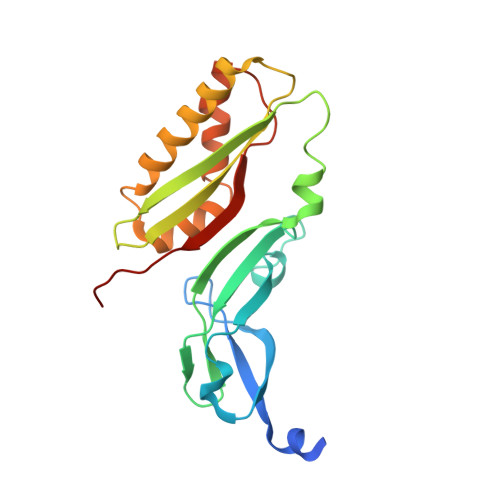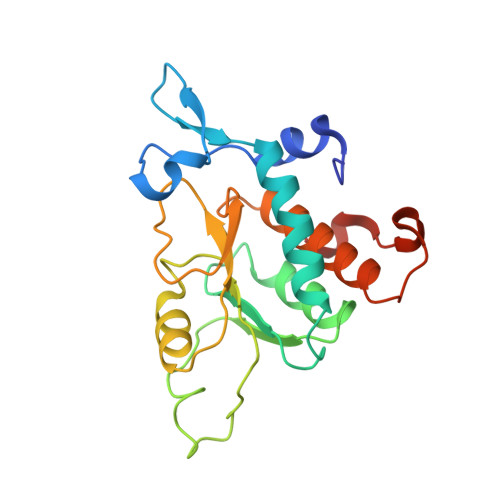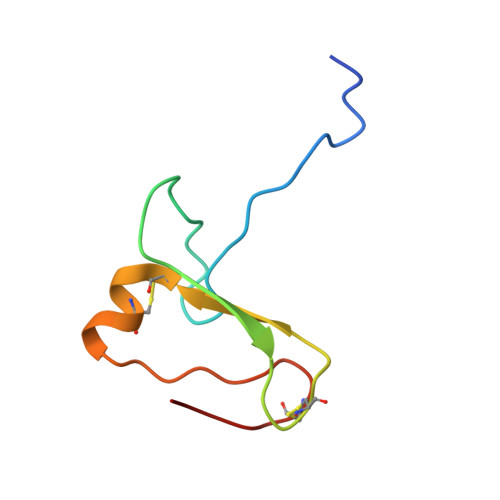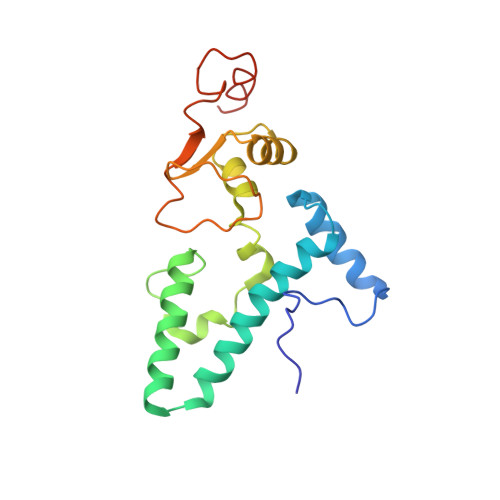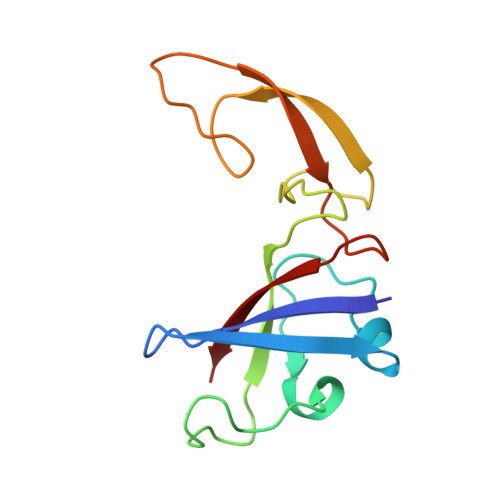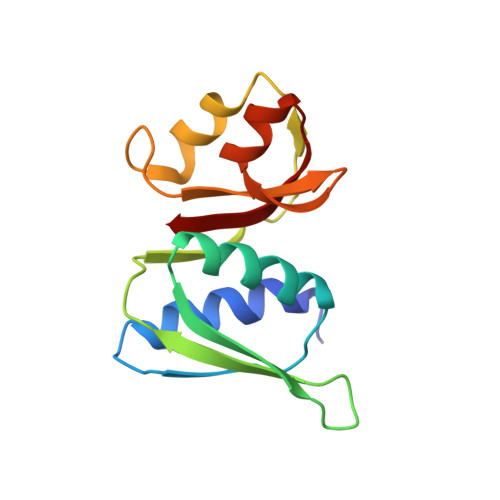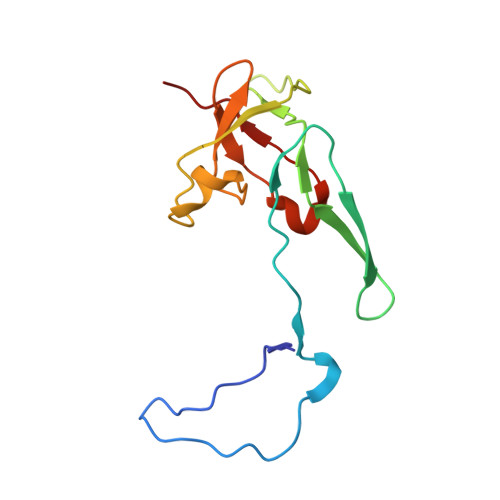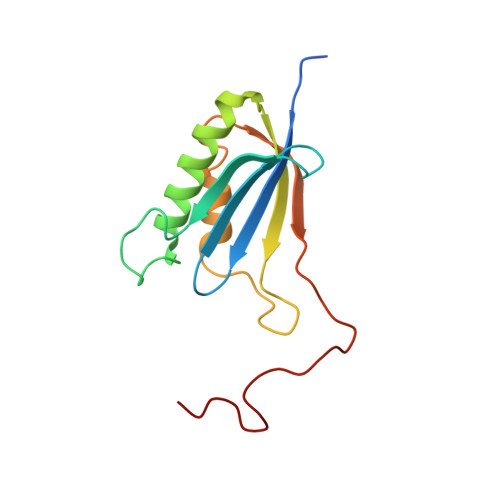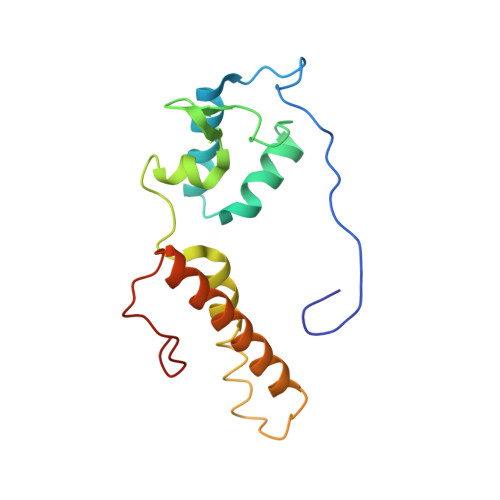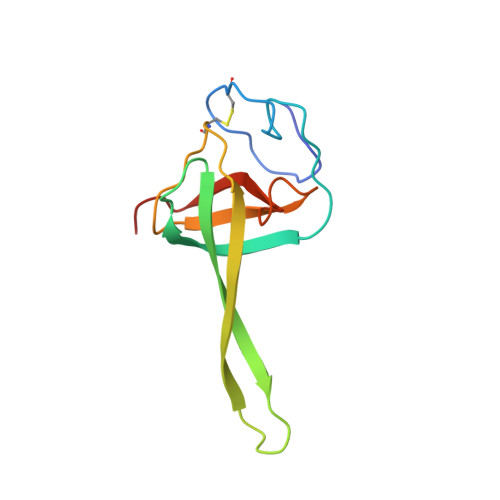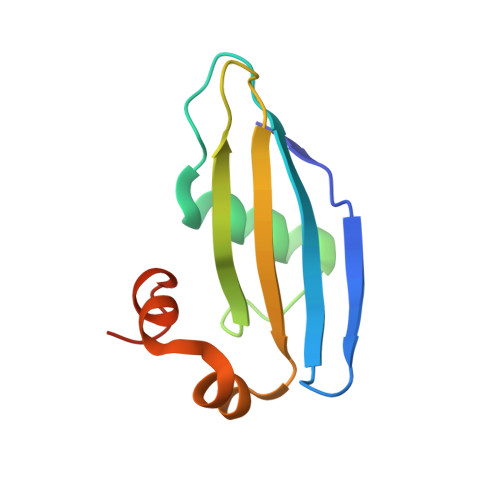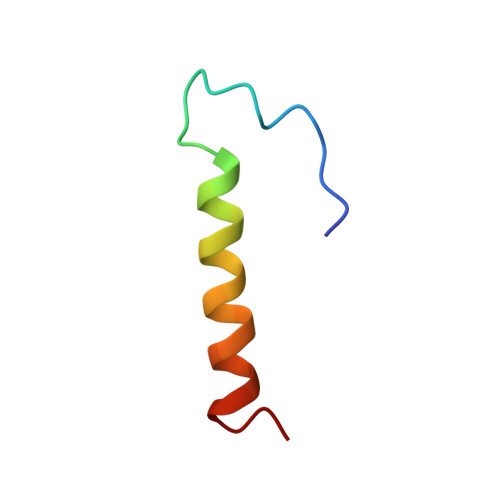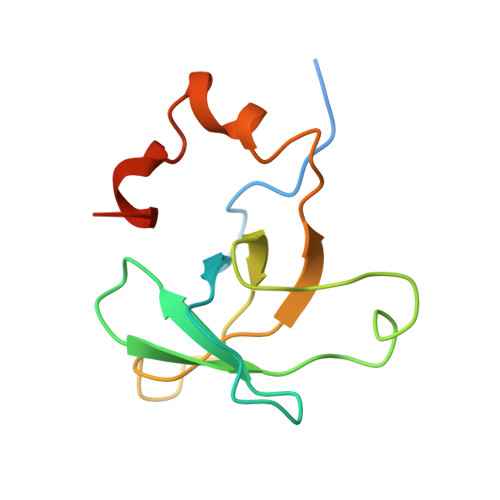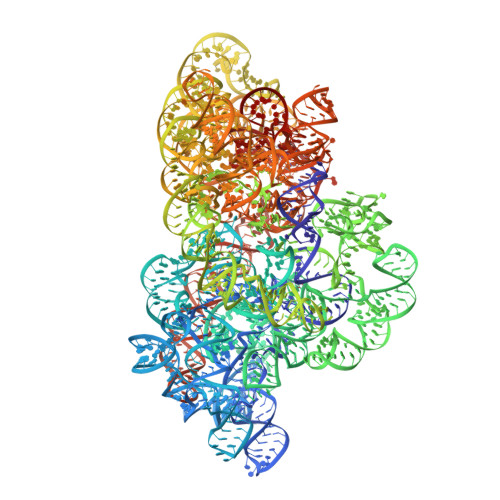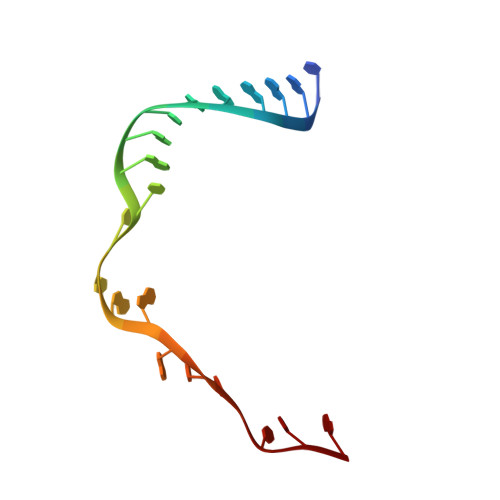Cryo-EM study of an archaeal 30S initiation complex gives insights into evolution of translation initiation.
Coureux, P.D., Lazennec-Schurdevin, C., Bourcier, S., Mechulam, Y., Schmitt, E.(2020) Commun Biol 3: 58-58
- PubMed: 32029867
- DOI: https://doi.org/10.1038/s42003-020-0780-0
- Primary Citation of Related Structures:
6SW9, 6SWC, 6SWD, 6SWE - PubMed Abstract:
Archaeal translation initiation occurs within a macromolecular complex containing the small ribosomal subunit (30S) bound to mRNA, initiation factors aIF1, aIF1A and the ternary complex aIF2:GDPNP:Met-tRNA i Met . Here, we determine the cryo-EM structure of a 30S:mRNA:aIF1A:aIF2:GTP:Met-tRNA i Met complex from Pyrococcus abyssi at 3.2 Å resolution. It highlights archaeal features in ribosomal proteins and rRNA modifications. We find an aS21 protein, at the location of eS21 in eukaryotic ribosomes. Moreover, we identify an N-terminal extension of archaeal eL41 contacting the P site. We characterize 34 N 4 -acetylcytidines distributed throughout 16S rRNA, likely contributing to hyperthermostability. Without aIF1, the 30S head is stabilized and initiator tRNA is tightly bound to the P site. A network of interactions involving tRNA, mRNA, rRNA modified nucleotides and C-terminal tails of uS9, uS13 and uS19 is observed. Universal features and domain-specific idiosyncrasies of translation initiation are discussed in light of ribosomal structures from representatives of each domain of life.
- Laboratoire de Biologie Structurale de la Cellule, BIOC, Ecole polytechnique, CNRS, Institut Polytechnique de Paris, 91128, Palaiseau, cedex, France. pierre-damien.coureux@polytechnique.edu.
Organizational Affiliation:








